
Jasper Gemstone: Meaning, Types, Properties, Value, Origins & More
 What gemstone is as old as the earth itself? Jasper, of course! Jasper is a unique and versatile gemstone that comes in every color of the rainbow. Matching its color diversity is the infinite patterns and combinations seen from gem to gem. Jasper is a form of microcrystalline quartz or chalcedony that’s been around for millennia.
What gemstone is as old as the earth itself? Jasper, of course! Jasper is a unique and versatile gemstone that comes in every color of the rainbow. Matching its color diversity is the infinite patterns and combinations seen from gem to gem. Jasper is a form of microcrystalline quartz or chalcedony that’s been around for millennia.
Since antiquity, people have harnessed jasper properties for protection, spiritual enlightenment, and natural healing. We’ve got a lot to cover about the jasper stone, and we’re sharing everything you need to know in this comprehensive guide — from jasper types to meanings to history to uses to gemstone properties and value.
Keep reading!
What is a Jasper Stone?
Jasper stone is a member of the quartz mineral family, with silica compositional properties that give the stones an opaque appearance. Because of their intensely vibrant patterns and colors, jewelers and lapidaries most commonly fashion them into polished cabochons to highlight their uniqueness.
There are many types of jasper, but the most common are Ocean Jaspers, produced by sedimentation deep in the ocean’s seafloor. There are many gemstones in the market, but few have such a vast and extensive history as jasper.
While most people are familiar with green jasper stone due to historical prevalence and biblical references, these gemstones come in all colors, including brown, yellow, red, orange, black, green, gray, and just about any color you can think of. But why choose only one color? Jasper stone colors are generally multi-colored with striking patterns.
Because of their beauty, bloodstone jasper makes for a personalized March birthstone gift. Jasper is the zodiac stone and Sun Sign for Virgo. Known for their practical and industrial personalities, it’s not surprising that their zodiac stone is one of the most protective and grounding around.
What gives jasper its coloring? To answer that question, let’s explore the gem’s characteristics.
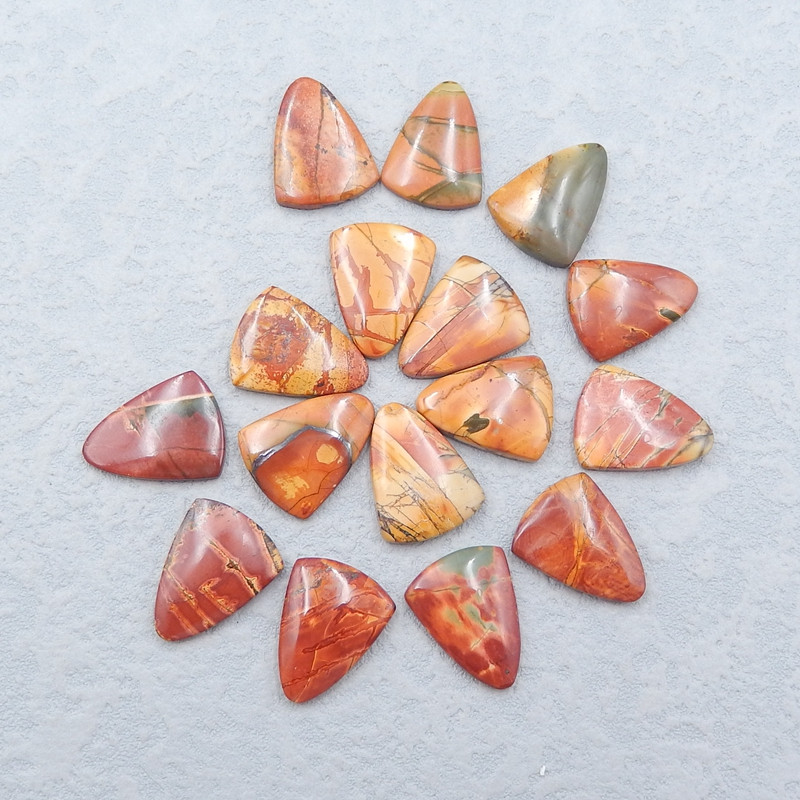
Jasper Specifications and Characteristics
Jasper rock, crystal, and gemstone specimens contain tiny quartz crystals that gain color from trace mineral impurities, such as iron in red jasper. As a stone, jasper is relatively hard, ranking at 7 on the Mohs Hardness Scale, making it a dependable material for jasper jewelry.
What color is jasper? Great question! Jasper gems come in endless varieties, but every type gets its name from its color. For example, bloodstone is a type of jasper with red inclusions while bumblebee jasper comes in bright, happy hues of yellow, orange, and black.
While there are many jasper types, below, we’ll outline the stone’s characteristics that categorize it as jasper stone.
Color: All colors, including green, red, orange, yellow, black, blue, and more.
Crystal structure: Microcrystalline, hexagonal
Mineral variety: Quartz or Chalcedony
Luster: Waxy to dull
Transparency: Opaque
Refractive index: 1.540-1.553
Cleavage: None
Fracture: Granular, conchoidal
Luminescence: Varies depending on different mineral impurities in jasper types
Treatments: None, heat treatment, or dyeing
Because there are so many jasper varieties, how can you identify the stone?
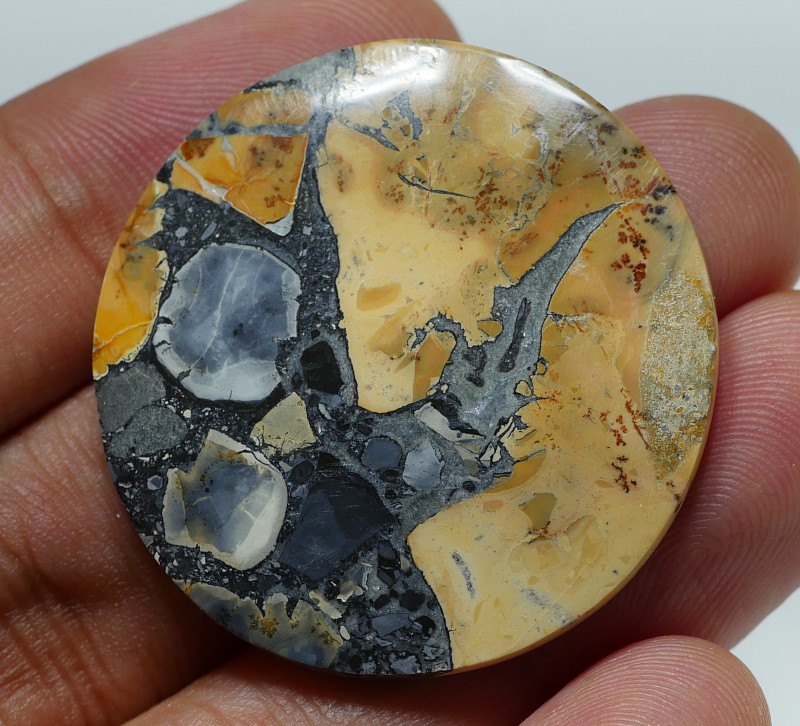
Identifying Characteristics of Jasper
In Author Marco Campos Venuti’s book, Genesis and Classification of Agates and Jaspers - a New theory, the Italian volcanologist and author of the Gemmologica Italiana passionately informs about the magnificent properties of Jasper and Agate stones.
Below is an excerpt:
“The formation of various kinds of silica like Agates, Jaspers, and Chalcedonies has been concluded that they originated from the influences of the weather, the dry, hot or the wet and the dry seasons, and sometimes meteoric impact into the earth and the environment.”
While jasper types vary across the board, there are uniting features, such as their chalcedony and quartz composition. Additionally, almost all aspers have patterns, although they vastly differ in appearance and color.
What does the jasper symbolize, and where does the name come from? Let’s take a look at the various jasper meanings next!
Jasper Stone Meaning
The etymology and jasper name meaning comes from the Old French word “jaspre” which is derived from the Latin term “iaspidem,” both of which means “spotted or speckled stone.”
Another jasper stone meaning you may have heard is “supreme nurturer,” a deserving name for one of the most precious healing stones. Because jasper has so many varieties, there are meanings for each type.
For instance, yellow jasper meaning comes from the stone’s protective properties, offering inner strength, discernment, and clarity. Green jasper meaning taps into the stone’s grounding properties, helping you stay on course during an exciting new venture, project, or pursuit.
While these characteristics are unique to this stone, there are literally thousands of types of jasper, and properties change across different varieties.
Types of Jasper
While green jasper tends to be the image most people think of, there are thousands of jasper types exuding a vibrant array of versatility. As you read about these jasper types, pay attention to how much they differ in pattern and mineral impurities.
Below is a list of the most popular types of jasper.

African Jasper
African Jasper is a type of jasper found in Africa that is often tinted to reach its exquisite color. The tinting enhancement improves the stone’s purpose as a Jasper stone substitute for its own matrix. Throughout history, the African Jasper has been prominent as the “Supreme Nurturer.” African jasper stone has been used and held sacred by individuals all over the world for centuries.
Most individuals believe that this stone has potent healing powers, which cure the mind, body, and soul. Chronological records imply that African jasper has helped people from all cultures over the timeline of humanity. Native Americans believe that Jasper can protect them during astral journeys while revealing the gateways of the sacred realms.

Biggs Jasper
The Biggs Jasper type is an American jasper found in the Biggs Junction in Oregon. One glance at this variety, and you can tell it’s rare. So rare, in fact, that these specimens fetch premium prices. You might be surprised, considering the relatively muted coloring — most jasper is valued for its vibrant color combinations. However, Biggs jasper stands out due to its distinctive pattern that looks like a picture.
Typically, Biggs jasper is paired with bronzite minerals and pearl beads. The stone has soft touches of lavender and rose. Biggs jasper jewelry and healing stones offer earthy properties such as naturalness, intuition, responsiveness and help achieve business goals.

Brazilian Jasper
Brazilian Jasper is considered one of nature’s most therapeutic stones, which soothes ailments of the heart, body, and soul. This South American jasper type absorbs audacity and soaks up all the pessimistic energy around you. Moreover, it’s indispensable in balancing the “yin and yang” energies, which improve your atmosphere and surrounding environment.
Holistically, Brazilian jasper helps combat mental, spiritual, and emotional toxins and pollutants. The stone purifies the soul so that the path to your dreams becomes crystal clear. Brazilian jasper is a curative stone conveying reliability, strength of mind, and enhanced insight to help you approach your vision with vigor and tenacity.
Carrasite Jasper
The etymology of Carrasite jasper originates from the Anglo-French term Jaspre, meaning “stippled stone.” Carrasite jasper forms when volcanic ash flows attach to silica. What’s impressive about this is that you can see the flow patterns of the unique material in each stone.
Like Biggs Jasper, Carrasite jasper comes from the Pacific Northwest region of the United States, with deposits flourishing in the Owyhee Mountains, which traverse the Oregon/Idaho border. Fascinatingly, this jasper type was only discovered in the 1970s and is commonly excavated alongside its famous cousin gem, Morrisonite Jasper.
The porcelain gemstones are picturesque, showcasing small scenes of sandhill, plains, mountains, and even the sky. Since the innovative materials were likely cross-bedded sediments, they often imitate the structure they encountered.

Imperial Jasper
One of the finest varieties around is Imperial jasper, which sits in a prestigious league with five fine jaspers alongside Bruneau jasper, Willow Creek Jasper, Blue Mountain jasper, and Morrisonite jasper. What makes Imperial jasper so esteemed? Take one glance at the vivid teal, purple, and gold hues that splash across the stones like watercolor, and you’ll fall in love. Almost all Imperial jasper comes from deposits embedded in a steep canyon in San Cristobal, a small town in Mexico near Guadalajara.
The region’s dense vegetation and locality are the prime breeding ground for fine Imperial jaspers. These impressive specimens are unique to themselves, richly saturated in brushstrokes of pastel or electric shades and colorful accents, making them look like a painting.

Jasper Beads
Jasper Beads comes in a broad spectrum of beautiful colors — each shade vibrating holistic energies that lend themselves well to crystal healers. The beads contain properties that slowly mold and shape the user, who experiences steady transformation.
Healing with jasper alleviates stress while balancing the opposing yin yang energies to ground and soothe the user harmoniously. Red Jasper beads are grounding and stabilizing stones that activate the center of our foundation and constitution, the Root Chakra, located at the base of the spine.
Jasper beads foster communication and encourage users to speak their truths and vocalize their needs in friendships, relationships, and the workplace. By healing with jasper beads, you will gain protection from restless sleep, negative energies, and stifled potential.

Bumblebee Jasper
Ready to learn about the most fun-looking jasper type? It can be none other than the warm-hued, vibrant patterned Bumblebee Jasper! As you can gather, this jasper type gets its name from its arsenic and manganese oxide inclusions, which form circular or striped patterns across the stone like the body of a bumblebee!
While not indeed a jasper variety due to its calcium carbonate mineral family (rather than chalcedony), Bumblebee Jasper is an honorary guest in the jasper family and was only recently discovered in Indonesia’s Papandayan Volcano in the 1990s.
Jasper Bumblebee is regarded as the “best nurturer,” thanks to its supportive and calming properties that offer peace during times of tension. With this bright and happy jasper gemstone, you’ll gain security and protection against nagging energies from others or yourself. Like all jasper healing properties, the Bumblebee variety is a friend to keep nearby while you work, as its powers protect against electromagnetic radiation.
Also, Bumblebee jasper encourages sincerity with oneself by infusing you with the courage to bravely deal with confrontation. An altogether energizing stone, Bumblebee jasper encourages organization, focus, tenacity to convert ideas into action, and reinvigorating the body with vitality.

Rough Jasper
Rough Jasper is uncut, unpolished, and rough around the edges as it remains the form it was in when it was unearthed. The benefit of rough jasper healing properties is that it's a tough, durable, and protective stone known to shelter you against danger and nightmares. Rough jasper is a good fortune stone that’s been cited in the bible as such.
Rough jasper is secure and stabilizing, safeguarding you against harmful energy, negative influences, and emotional tensions. Altogether, rough jasper lends itself best to natural healing crystals and home decor. Placing rough jasper around your home will create a protective grid to secure your home against negativity, danger, and harmful thoughts and behaviors.
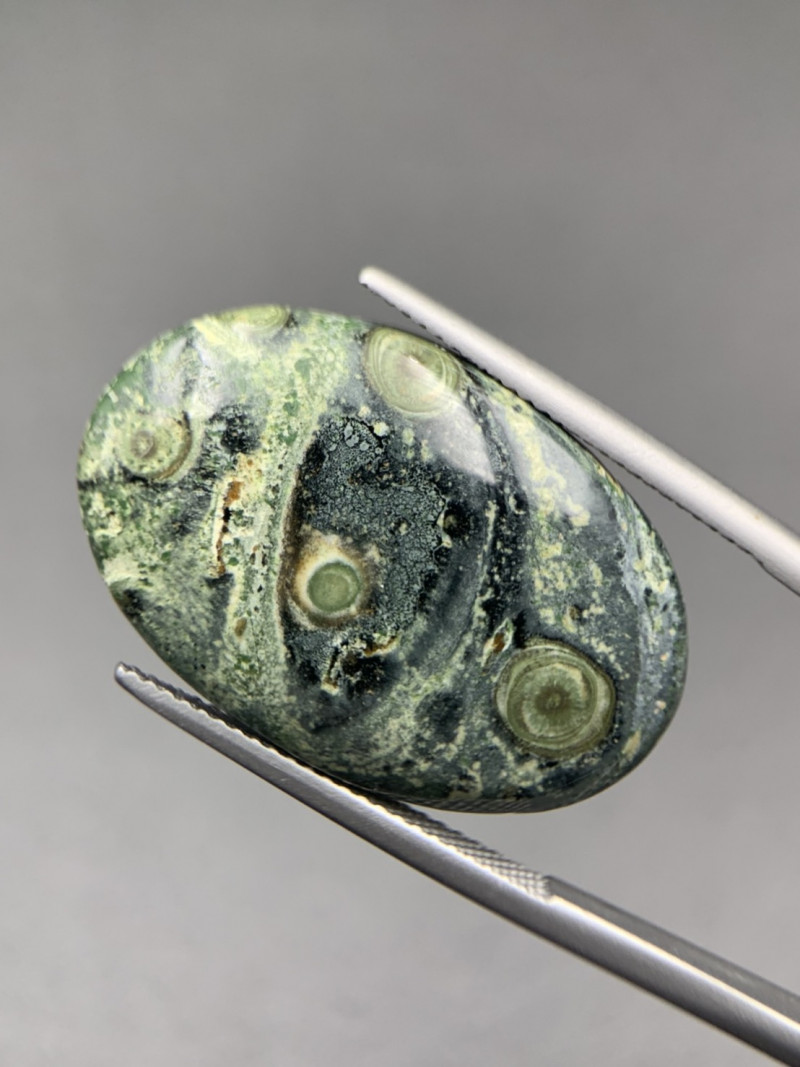
Kambaba Jasper
Kambaba (also known as crocodile jasper) is a type of jasper, a dark-grey to green sedimentary mineral typically found in Madagascar and South Africa. Kambaba jasper consists of fossilized green algae with round back and green circles. Because of its dark earth tones, Kambaba jasper healing properties are profoundly grounding and foundational. The stone’s hues direct your energies downward and infuse you with Earth energies.
Green energy is generally associated with the Heart Chakra, the center for self-love and compassion. Kambaba jasper pulls you inward to the center of the soul, where optimism flourishes. The stone can help you absolve yourself of uncertainty and finally break free from survival mode.

Mookaite Jasper
Mookaite Jasper is sedimentary jasper from Australia, which typically contains prehistoric fossils. This striking jasper type comes in yellow, red, and brownish-red colors. Holistically, Mookaite jasper motivates the need for new experiences and assists you in maintaining a balance between external activities influences and your internal response to them.
The optimistic jasper imparts an unfathomable calm while encouraging flexibility during tense situations. In Australia, Mookaite was considered to be a curative stone that bestows powers to the users. Like all jasper protection stones, the user finds relief from complicated situations while strengthening the ties to loved ones and departed loved ones.

Noreena Jasper
Another Australian jasper variety is Noreena Jasper, found along the Pilbara district of Western Australia, not totally from the iron ore mining city of Newman. This stone tends to split into bony pieces, which display the most amazing “geometric” designs and patterns. Until the rock is unearthed and polished, you don’t know what kind of incredible patterns you will discover.
Noreena jasper has the same physical form as Munjina Stone. They both transpire in the Jeerinah structure, a significant part of the Fortescue Group in the Hamersley during the Basin Age. It is a silicified mudstone usually mined in Australia.

Ocean Jasper
We mentioned that Ocean Jasper is one of the most popular varieties, but what makes it unique? Ocean jasper is very common and strikingly beautiful, containing orb-like nodules from the silicic fluid that forms around the circular nucleus cluster. The nodules meld with sedimentary elements and band together, forming continuous banded layers that showcase beautifully when polished.
As you can imagine, these ethereal beauties embody the inimitable awe of the ocean.
Unlike most jasper types, which are most commonly opaque, Ocean jasper is transparent but not altogether clear. Interestingly, these beautiful stones were quite recently discovered in 1999 but have enforced a commendable place as one of the most desirable jasper types.
Holistically, Ocean Jasper is considered a defending stone. Because of their circular or oval patterns — referred to as eyes — they are regarded as protectors against the “evil eye,” the supernatural curse cast by others to inflict harm.
In addition to its protective powers, Ocean Jasper healing properties offer comfort, tranquility, and peace of mind. It is also a stone of happiness and recreation, which is great for facilitating support at your home or workplace.
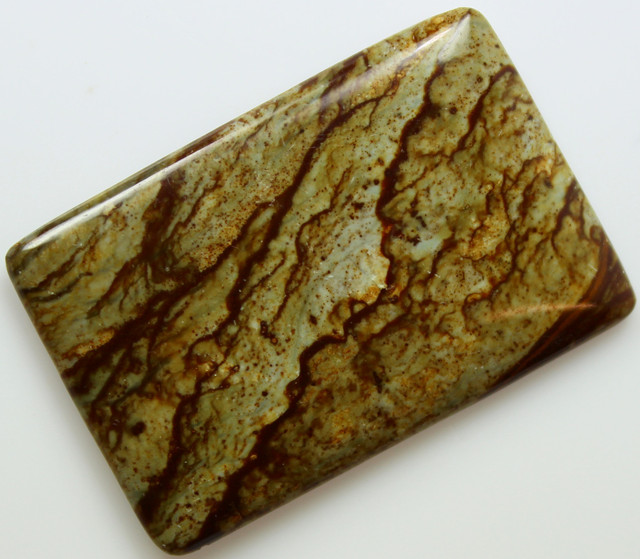
Owyhee Jasper
Owyhee Jasper originated from the border of Oregon and Idaho. It comes in several colors. In fact, it is sedimentary jasper or a petrified mud with exciting features, as well.
It is a semi-valuable stone in a mud-covered red-brown, green, and yellow color. It is an excellent stone for financial success. It is suitable for those individuals who desire to reproduce money quickly.
It is also valuable for those individuals who want to excel in horse racing, speculation, and many more. It is also helpful for those patients who suffer from extended and inexplicable diseases. Jasper gemstone also defends the user from insect bites, dying, and accidental injuries. Also, it enhances the intellectual aspect of the wearer, and it is particularly beneficial for those wanting to increase their attentiveness.

Picture Jasper
Picture Jasper is an opaque variety of brown jasper that exhibits what can only be described as a natural phenomenon. The exquisite banding, depositional flow patterns, and veining on these pictorial stones look like scenes from a natural landscape.
In crystal healing, it’s a grounding and harmonizing gemstone with a solid connection to the earth. Picture jasper encourages feelings of dependability towards the planet, inflicting a need to nurture the earth and safeguard its longevity.
Also, Picture jasper is a gemstone that usually consists of a combination of petrified mud in pockets of the earliest volcanic rock. It’s the silicate mud, petrified, or dendritic inclusions that create the layers that produce the beautiful pictures. Mimicking the vast and furtive lands from which they form, Picture jaspers are usually found in the Pacific Northwest region of the United States.
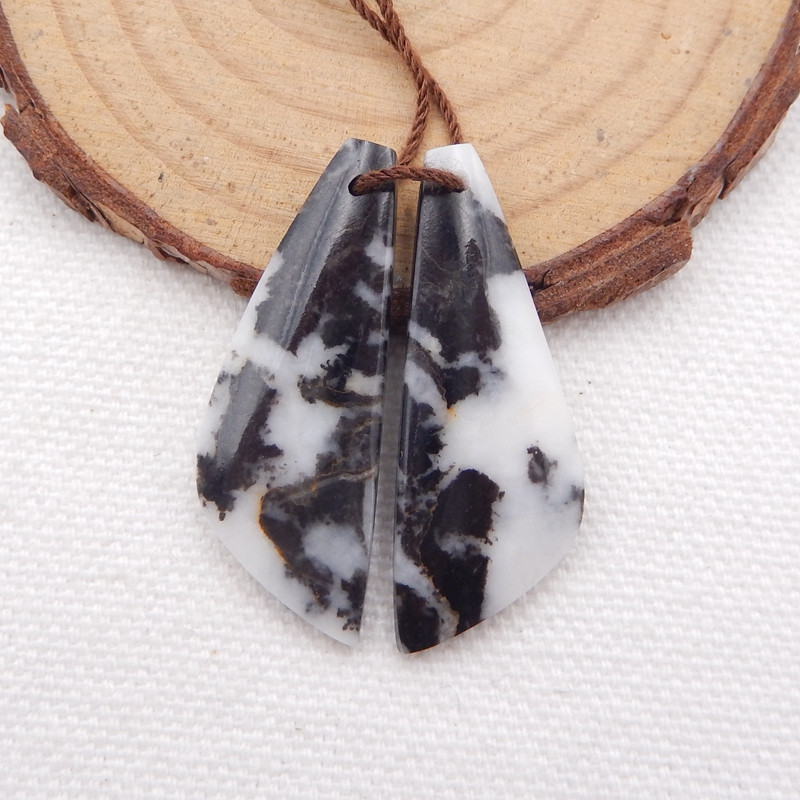
Zebra Jasper
Zebra Jasper stones are another stunning display of gemstones mimicking nature. These opaque white and black striped jasper stones look like the pattern of a zebra! These fun gemstones encourage sympathy and concern while balancing emotions.
Because of its bright, contrasting patterns, zebra jasper gives conviction, happiness, and confidence. The stone nurtures relationships as well while physically bolstering stamina, increasing physical power, and aligning the spine (likely due to its vertical lines).
Zebra jasper healing properties encourage action, strength, and the conviction to set wheels into motion with your goals. Lastly, the stone’s courage-boosting properties instill you with valor and willpower to endure the hardships of your journey and continue on the path toward success.
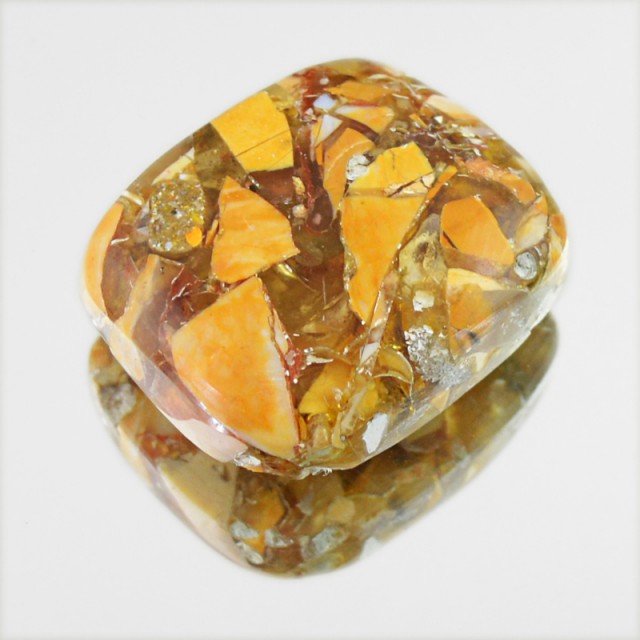
Brecciated Jasper
Brecciated Jasper is a type of Jasper containing multi-colored layers that are enclosed together with the mineral hematite. Another name for this jasper stone is Poppy jasper, due to its speckles and orbed patterns, looks like white, black, and brown poppies. Overall, the stone is characterized as an opaque gray and red gemstone.
In healing, Brecciated jasper is a grounding stone, which makes it an excellent gemstone for launching you into action while keeping you grounded and rooted in your life’s purpose.
At the same time, the stone’s healing properties have revitalizing energy that supports contentment and happiness. Like other jaspers, Brecciated jasper has absorbing qualities that absolve negative energy, making room for positive feelings and an uplifting outlook on life.

Jasper Cameo
One unique addition humans contribute to natural jasper is engraving them into cameos. The most beautiful jasper cameos have vibrant colors and distinct patterns that stand out from the carved relief. Jasper cameos rose to popularity in the 19th century when English company, Wedgwood, produced them and they became staples of the style of the time.
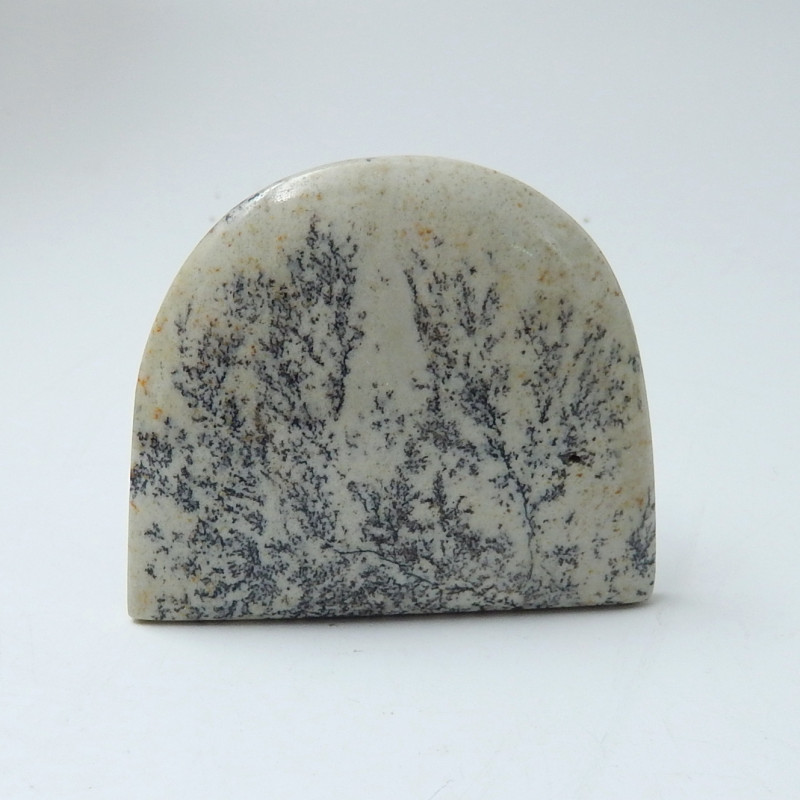
Dendritic Jasper
Occasionally, jaspers that contain “dendrites” have tiny, black feathery patterns that look like beautiful landscape paintings or natural scenes. Because of their novelty, dendritic jaspers retain high market value and fetch premium prices — especially those exhibiting stunning nature scenes.
Because of their embodiment of nature, dendritic jasper properties provoke sharp mental clarity and quick thinking, making them hot commodities for artists, writers, inventors, and creative types.

Drusy Jasper
Drusy jasper is a piece of jasper that consists of a “drusy,” which is a small cave with protruding tiny crystals. These specimens are typically mined in Oregon and are rare commodities found in rock shops. They are highly decorative and make for unique jasper jewelry pieces.
Thanks to their openness, druzy jasper properties offer wearers tranquility, peace, patience, and self-love, while strengthening the constitution of the spirit.

Spider Web Jasper
Spiderweb Jasper (also known as net jasper) looks like — you guessed it — an intricate spider web! The illustrative webbing across the stone, over time, cracked and enveloped itself in more layers of jasper, creating a web-like black and white pattern across the stone.
What is spiderweb jasper good for? In healing, the stone has nurturing energies that connect to Divine Feminine energy. Overall, spiderweb jasper cams disturbing thoughts while washing you in the sense of peace and serenity.
Spiderweb jasper is associated with the Root Chakra, offering immense grounding and stabilization to wearers. If you’re craving ultimate relaxation, spiderweb jasper is a calming healing stone to keep nearby.
Wow, we’ve covered a lot about the various types of jasper and their uses, meanings, and origins.
Next, we’ll dive deeper into jasper crystal meaning, healing properties, and uses.
Jasper Properties and Uses
So, what does jasper do, and how can you use it in your life? Jasper crystals are an important feature of ancient and modern crystal healing.
In holistic healing, many jasper crystals are connected to the Root Chakra, which is the foundational energy center in the body responsible for grounding and stabilizing. Brecciated jasper opens the Sacral Chakra, the source of vital life force and energy. If you’re feeling lazy and wayward, brecciated jasper can unblock the chakra and help you achieve a higher potential.
Green jasper crystals can provide physical relief from aggressive skin issues while offering relief from bloating and stomach pain.
Jasper crystal is thoroughly holistic, balancing energies while protecting you from negative influences. It’s an absorbing stone that is perfect to have handy to soak up negative energy and pave the way for therapeutic light to purify your emotional, spiritual, and physical wellbeing. Because of its absorbing nature, keeping a jasper crystal on your desk can protect you from harmful electromagnetic radiation and environmental toxins.
Creatively, jasper crystals stimulate the mind, inspiring new thought and creativity.
Beyond crystal healing, jasper is a popular material for figurines and decorative ornaments like cameos. And, of course, jasper jewelry remains ever-popular, with beads and cabochons commonly used in bracelets, earrings, and necklaces.
Many of these jasper uses trickle back through the timeline of humankind.
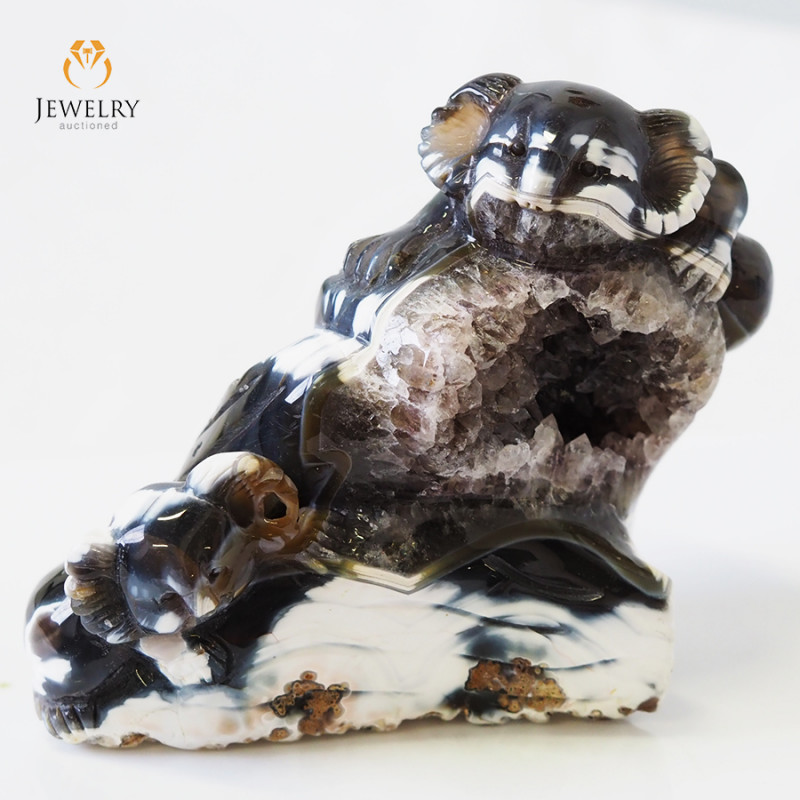
Jasper History
Jasper predated Christianity and was used in early civilizations to manifest rains and harvests. Jasper stone symbolizes one of the most influential figures in the bible, the apostle Peter. Moses’ brother, the High Priest Aaron’s Breastplate of Judgment, featured jasper stone, among 12 precious gemstones including ruby, topaz, carbuncle, turquoise, sapphire, emerald, jacinth, agate, amethyst, beryl, and onyx.
Because of its strong biblical origins, Jasper remained a powerful symbol throughout the evolution of Christianity. Another representation is jasper as a symbol of courage, strength, and wisdom due to its association with the angel Raphael, the guardian of pilgrims and voyagers.
But jasper stones predate civilization altogether, with the earliest records dating back 50 million years. As an organism, jasper sediments date back 4.5 to 6 billion years with Stormalite, ancient fossilized algae. That means jasper is older than dinosaurs!
Later, as civilization evolved to the creation of humankind (about 7,000 years ago), red and green jaspers adorned the people of early Mesopotamia.
In Viking lore, Germanic warrior Siegfried — known as the dragonslayer — yielded a sword with a jasper inlay in the hilt that bestowed him with courage. That’s a sword to be reckoned with!
Native Americans call red jasper the “blood of Mother Earth” and credit the stone to good health and rebirth.
What’s fantastic about jasper gemstones is that their time-honored uses as spiritual conduits and protective talismans carry into the modern era. Today, people wear jasper jewelry and purchase rough specimens for décor and spiritual purposes.
Like all gemstones, it’s wise to acquaint yourself with the standard features if you plan to buy jasper stones.
Jasper Gemstone Properties
Several important factors dictate a jasper stone’s value and desirability. Mostly, it comes down to jasper properties such as shape, color, and pattern.
Shape
Jasper gemstones are not popularly faceted (cut) like other stones. Instead, their patterns and colors display best when smoothed and polished. This cutting style is called cabochon, or “cab” for short, allowing the stone to show its unique properties.
Color
Jasper color plays a significant role in the stone’s value. The most beautiful stones have opaque earth tones with bright splashes of color. But color alone isn’t what fetches premium prices. A jasper must exhibit striking contrast between the light and dark tones, and the color should be richly saturated. Good examples of valuable jasper color are seen in rarer breeds, such as Imperial Jasper, Ocean Jasper, and Madagascar Jasper.
Pattern
Is color or pattern more critical? That’s a great question, and the answer will vary because it’s highly preferential. Color is essential, but a striking design must accompany good color for a jasper gemstone to catch eyes. Common patterns you’ll see in jaspers include:
Stripes
Rings
Swirls
Spots
Rosettes (flames)
Speckles
Circles
Ovals
Feathers
Landscapes
Pictures
There is so much to learn about jasper patterns that we’ll revisit the topic in a bit!
Treatments and Enhancement
Most gemstones receive treatments to enhance their vibrant colors and patterns, but jasper stands out from the crowd here. Most jasper receives its intricate patterns and colors from billions of years, forming and interacting with nearby minerals. That means that when miners excavate jasper specimens, they’re most often that beautiful straight from the earth.
However, some stones are dyed or heat-treated to enhance their colors and patterns. Heat treatment is a stable and non-invasive process that doesn’t lower the value of the stone. When you buy jasper stones, ask if the rocks have undergone any types of treatments so that you know what you’re buying.
Now that we’ve covered the primary buying factors, how expensive is jasper?
Jasper Value
Jasper stones are common and widely available. As such, their value isn’t going to be as high as precious stones like diamonds or opals. However, jaspers gain value in their unique patterns and color combinations. While some common jasper can cost less than a dollar, finer specimens range from $2-$5 per carat.
You will see premium prices on fine quality Imperial and Madagascar Jasper due to their rarity. But you won’t often see these pieces on the shelves of rock shops, which generally sell commercial-grade jasper for around $5.
If jaspers exhibit a striking picture or landscape pattern, their novelty alone can elevate them to premium prices. For these gems, larger stones that display vivid scenes can cost up to $200 a specimen.
On the whole, however, jasper stones are affordable and easy to find!
Formation Process and Patterns
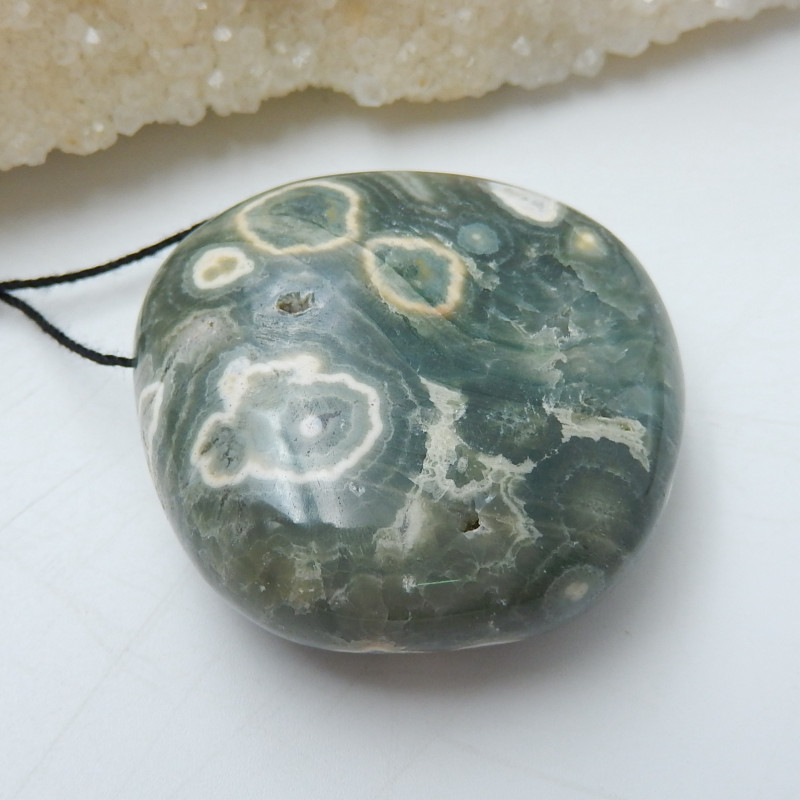
Abyssal Jasper (Ocean Jasper)
The colors are formed when oxygen and the iron are oxidized, giving the jasper its yellow or red ocher color. If there isn’t much oxygen, then the jasper color becomes green or black.
The banded iron formation – also in the ocean jasper category – alternates with layers of magnetite when formed with large deposits of hematite. The massive concentration of acid in the seawater is known to reflect the silica and the iron content.
For millions of years, iron laid on the seafloor was oxidized oxygen, resulting in the banded iron formation. Tiger’s eye is another jasper formation.
Volcanic Jaspers are volcanic rocks that are silicified, known as rhyolites. The chemistry of rocks can be altered by the thermal waters often associated with the flow of silica. Rhyolites were formed due to rock erupting that contained more than 70% silica with varying structures.

Stratiform (Layered) Jaspers
Most interesting is that stratiform jaspers with rich brown or ochre color culminated from the oxidation of the iron. Stratiform jaspers have a pattern of dune-like layers or lines and are often called picture stones or landscape stones.
Massive Blocky Jaspers
Massive blocky jaspers are thick stones that came about due to the change of the rhyolitic tuffs, formed next to the volcanic deposits. These stones are pretty angular in shape and show some fractures that drain the oxidizing process and carry elements of chromophores.
Qualities of massive blocky jaspers are:
Show colors of purple, red, and yellow.
Have a high content of opalite.
Have an irregular shape that’s mostly angular, showing some fractures.
Can also be nodular and sometimes can show dendrites into three dimensions.

Rhyolitic Jaspers
These jaspers formed from lava flows, altering their rhyolitic state. When lava erupts, it cools very fast and vitrifies. From there, it can transform into a black glass disallowing it to crystallize.
Features of Rhyolitic Jasper:
Solid and only broken manually.
Cannot be classified as nodular.
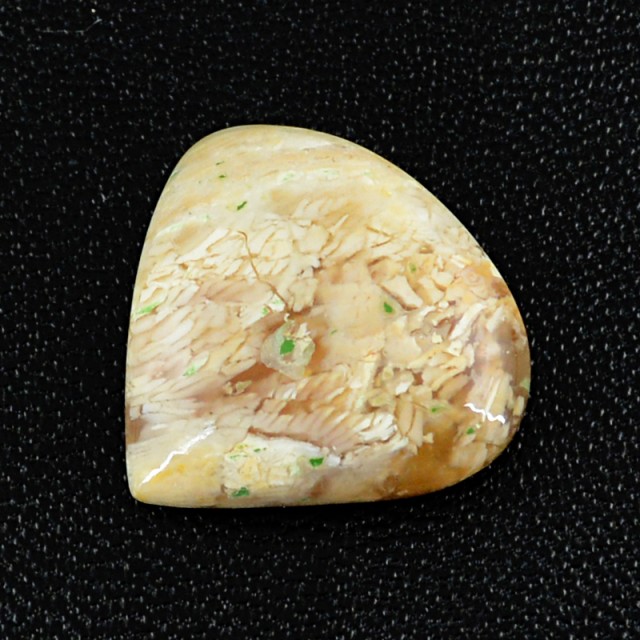
Jaspers Pseudomorphic on Fossils
Pseudomorphosis occurs when fossils are silicified similar to the petrified forest. Fossilization is a very long process that occurs over millions of years, starting from shells, corals, sponges, dinosaur skeletons, algae, and prehistoric animal carcasses.
Chemical Jaspers
These were found in nodules or cavities that had no precursors, fossils, or volcanic rock. Instead, they are formed by silica colloids and by the intermingling stages of precipitation of opal.
Orbed Jaspers
The formation of these is so rare that they are highly sought after by collectors and lapidaries. What makes them so special? They are formed like circles that overlap the central part of the stone. These Jaspers are so compacted that they are referred to as porcelain and make for a perfect brilliant polish. Shapes can be in the form of geodes; sometimes, they can be found inside thundereggs and have a veiny look.
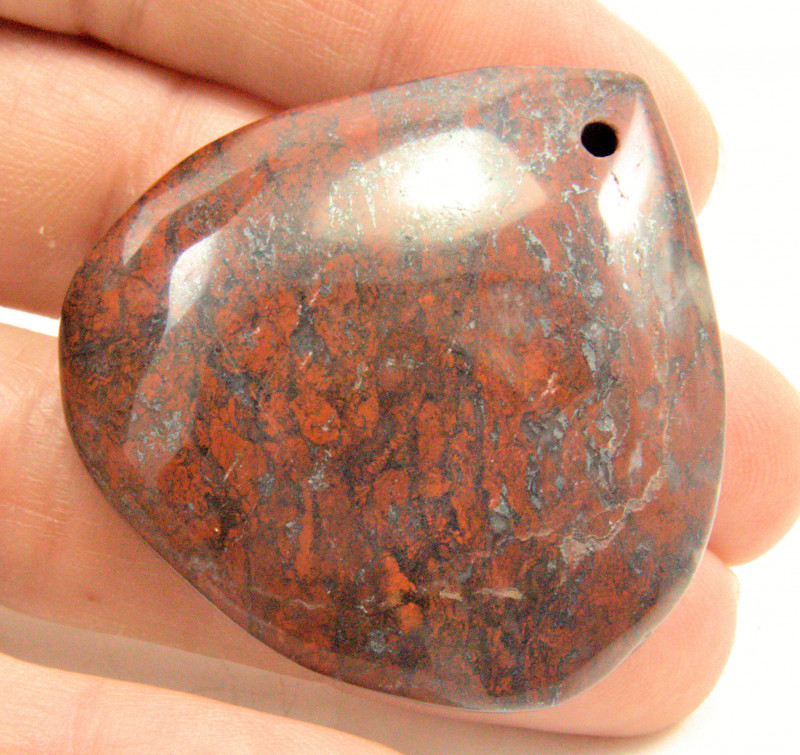
Brecciated Jaspers
These highly popular forms of jasper are crafted into inlays, jewelry boxes, and furniture. This kind of jasper has fractures that are found in large nodules. Brecciated jaspers are a durable rock that’s almost impossible to break.
And that’s how all of the varieties of jaspers form! So, where do jasper stones come from?
Sources
There are jasper deposits around the globe. The biggest supplies come from the following countries:
India
Australia
Russia
Madagascar
Egypt
Indonesia
Kazakhstan
Brazil
Uruguay
Venezuela
United States
Arizona
Utah
Arkansas
California
Washington
Oregon
Texas
Idaho

Similar Gemstones
Remember how jasper is a chalcedony gemstone? There are other gemstones from this mineral family, including carnelian, agate, black onyx, and sardonyx.
Jazzed on Jasper Gemstones?
We’ve taken a tour back through the timeline of the earth’s inception to discover all of the pertinent properties of the jasper stone. We’ve learned a lot, so let’s have a brief recap! Coming as no surprise to you, there are endless types of jasper, and we’ve likely only explored the surface of what is yet to be discovered about the phenomenal jasper stone.
While jasper is a relatively common and affordable gemstone, there are rare varieties that climb to premium prices, influenced by their distinct patterns and originality. Holistically, jasper properties vary across different varieties but boast grounding energies across the board.
Jasper’s biblical and prehistoric origins place it among the oldest materials in the world, and its prominence has threaded through time and cultures, carving a permanent place in modern society with jewelry and healing remedies.
It seems like there’s a jasper out there for everyone, so which would you like to get your hands on first? Whichever you choose, jasper’s grounding and protective properties will safeguard you from negativity, allowing positive light to filter into your life and home. Thanks for joining us on our jasper gemstone tour!
Buy Jasper Stones from Gem Rock Auctions!
Search the Gemstone Encyclopedia
Related Auctions
Related Articles
Originally the Birthstones or gemstones were associated with a zodiac sign or the month of a individuals birth. Find out what your stone is and view the stones we have for sale
8th Feb 2021
There are dozens of quartz and chalcedony gems with various colors and patterns. Learn all about quartz properties and every type of quartz, from amethyst and agate to plasma and phantom quartz!
15th Oct 2020
Hackmanite is a pink to violet sodalite gem known for its unique color-change and luminescence. Learn why hackmanite is special, from its rare qualities to the types of hackmanite jewelry available.
28th Mar 2018
Latest Articles
Yugawaralite is a rare colorless, white, or pinkish zeolite crystal named for its discovery in Yugawara, Japan. Here we uncover the multifaceted history, properties, prices, and uses of yugawaralite.
24th Mar 2025
Simpsonite is a lesser-known mineral known on the gem market for its durability, yellow-orange color, and rarity. Discover all the properties, uses, prices, and history of simpsonite.
3rd Mar 2025
Kurnakovite is a colorless crystal related to inderite and rarely faceted but known among collectors. Explore the mineral traits, history, prices, and more in this kurnakovite guide.
17th Feb 2025
Article Categories
How To's is where you will find helpful articles from gem Rock Auctions on how to cut gemstones, select gemstones and buy gemstones.
9 Articles





